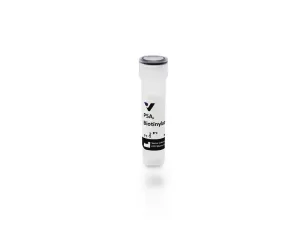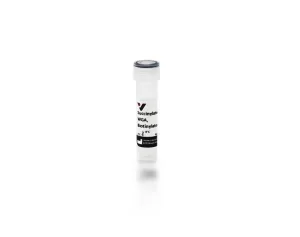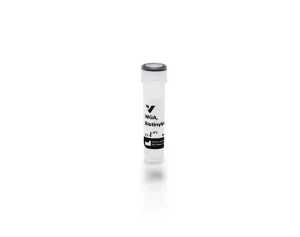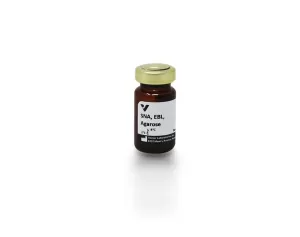Vector Laboratories is closed for the President’s Day on Monday, February 19th. We will be back in the office on Tuesday, February 20th.
We will respond to emails upon our return. Have a wonderful day.
Menu
Vector Laboratories is closed for the President’s Day on Monday, February 19th. We will be back in the office on Tuesday, February 20th.
We will respond to emails upon our return. Have a wonderful day.
Tomato lectin (from Lycopersicon esculentum) is an effective marker of blood vessels and microglial cells in rodents. Conjugation of the lectin with a fluorophore facilitates fast, one-step detection and visualization using intravascular perfusion methods or direct application to tissue sections.
DyLight™ 649 labeled tomato lectin has an appropriate number of fluorochromes bound to provide the optimum staining characteristics for this lectin. This conjugate is supplied essentially free of unconjugated fluorochromes.
| Unit Size | 1 mg |
|---|---|
| Applications | Immunofluorescence, Glycobiology |
| Recommended Usage | The recommended concentration range for use is 5-20 µg/ml. If a precipitate forms upon long-term storage, warm to 37 ºC. |
| Recommended Storage | 2-8 °C |
| Maximum Excitation | 655 nm |
| Maximum Emission | 670 nm |
| Solution | 10 mM HEPES, 0.15 M NaCl, pH 7.5, 0.08% sodium azide, 0.1 mM CaCl2. |
| Concentration | 1 mg active conjugate/ml |
| Conjugate | DyLight 649 |
| Color of Fluorescence | Far Red |
| Sugar Specificity | [GlcNAc]1-3, N-Acetylglucosamine |
The Lycopersicon esculentum (tomato) lectin has been widely reported as an effective blood vessel marker for in vivo vascular perfusion studies in rodent species. Investigators have primarily utilized one of the fluorophore conjugated tomato lectin formats to trace blood vasculature in normal and diseased animals via tail vein or intracardiac injection. However, the biotinylated format has also been used. It allows for flexibility in subsequent visualization by way of either fluorescence or enzyme-based methods. Published references are best source for procedural details. Examples of references where biotinylated tomato lectins have been applied via in vivo perfusion are featured below: Robertson, R.T., et al. (2014) Histochem. Cell Biol. 143(2) Thurston, G., et al. (1998) Am. J Pathol. 153(4):1099-1112
Tomato lectin is a very stable single subunit glycoprotein containing about 50 percent arabinose and galactose and may form multimeric aggregates in solution. Tomato lectin, although sharing some specificities with potato lectin, Datura lectin, and wheat germ agglutinin, has been reported to be dissimilar in many respects. LEL binds well to glycophorin and Tamm-Horsfall glycoprotein.
DyLight™ 649 conjugated tomato lectin emits in the far red and is an excellent second label in systems with green/yellow fluorescence such as GFP expressed in transgenic animals, or with fluorescein conjugates in standard double label studies. The tomato lectin complements our existing range of lectin reagents and should be a valuable tool in examining rodent tumor angiogenesis, tracing neovascular development in xenograft models and brain research.
Accompanying each fluorescent lectin is an analysis data sheet summarizing the results of our quality control tests and providing pertinent information on the product. All of these reagents are supplied as solutions preserved with sodium azide.
Inhibiting/Eluting Sugar: Chitin Hydrolysate
Applicable patents and legal notices are available at legal notices.




Stay in the Loop. Join Our Online Community
Together we breakthroughTM

©Vector Laboratories, Inc. 2024 All Rights Reserved.
How do I Request a Quote?
To request a quote for products: